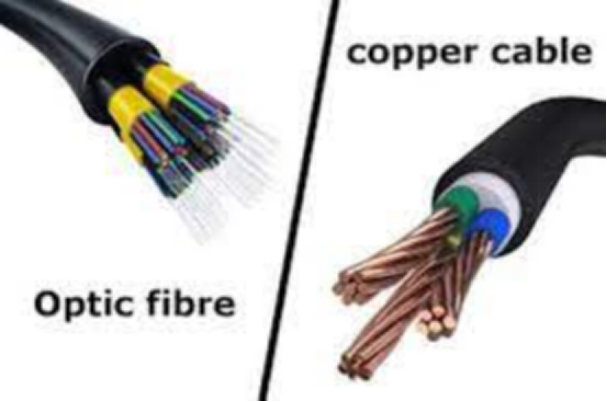News
Site Editor
 Site
https://leonetworkgroup.usa18.wondercdn.com/uploads/image/5fe152faa587d.png
The pros and cons of copper cable systems, as well as the distinctions between them, are covered in this article.
Site
https://leonetworkgroup.usa18.wondercdn.com/uploads/image/5fe152faa587d.png
The pros and cons of copper cable systems, as well as the distinctions between them, are covered in this article.
Difference Between Cabling Fiber Optics vs Copper Cable Systems
Views: 1021
Author: Site Editor
Publish Time: 2022-12-14
Origin: Site
We are all familiar with two common types of cables: copper and fiber optic. Copper cables have been there in the market for several years now. However, fiber optics, while not entirely new, has gained popularity in recent years.
Even though copper cables are still widely used, copper and fiber optic cables can function together, especially when it comes to networks that are already in place. Additionally, copper cabling may still be useful for small networks that are limited to one or a few buildings.
The pros and cons of copper cable systems, as well as the distinctions between them, are covered in this article.
Copper Cabling – Advantages and Disadvantages Analyzed
Here are some advantages of copper wiring.
Ø Copper has long been employed due to its conductivity as well as the fact that it is a very malleable and ductile metal. Therefore, it is simple to cut into thin sheets or wires, which makes it easier to build cables.
Ø Copper has a high tensile strength and is a hard metal that does not break readily, making it more affordable than silver.
Ø Coper can be utilized in damp and humid environments since it is corrosion- and rust-resistant.

Here are some cons of copper cabling.
ü Although fiber optic cables are more compact and easier to install, copper wires may be more difficult to relocate to a different location.
ü Copper cables have the potential to generate electromagnetic current, which could disrupt the network or cause electromagnetic interference
ü RF signals have traditionally been conveyed using a copper cable in the defense industry and other mission-critical application areas, but there are problems with EMI, RF, and signal attenuation.
Fiber Optic Cables: Advantages and Disadvantages Analyzed
Here are some pros of fiber optic cables.
ü Fiber optic cables outperform copper connections in terms of signal quality, bandwidth, and seamless connectivity. All of these capabilities allow for quick and uninterrupted data transfer.
ü Fiber optic cables are thin and space-saving. They have unquestionably a great capacity and aid in extending legacy networks in terms of speed and distance because this makes it possible for them to be installed in hard-to-reach or confined regions. By doing so, they reduce the expenses and labor necessary to establish a whole fiber optic network after removing the old one.
ü Fiber optic cables are robust and resistant to various adverse environmental factors, including vibration, moisture, and so on as they move beneath the ground and, in the case of huge networks, over oceans.
ü Fiber optic networks provide superior data security mostly due to the manner data is transferred; they are scalable and allow for future extensions. Fiber optic networks are harder to attack than copper cables.
The only drawback of fiber optic cabling right now is the significant upfront costs. Although installing fiber optic networks is expensive, they could be cost-effective in the long term. The cost of fiber optic cables, devices, and network installation, however, may decline as demand for fiber optics increases and economies of scale are realized.
Contact Us for Your Premium Copper Cable Systems
Copper is a great heat and electrical conductor by itself, copper cables have been utilized in wiring since the days of analog landlines and even earlier.
For your copper cable system, equipment, and network installation kits, get in touch with us.
If you want to know more about industrial network cabinet,china fiber optic splice closure,china fiber optic distribution box,please consult the fiber optic splice closure factory




